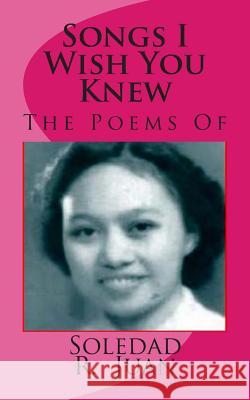Songs I Wish You Knew: The Poems Of » książka
Songs I Wish You Knew: The Poems Of
ISBN-13: 9781461094555 / Angielski / Miękka / 2011 / 112 str.
Many of Choleng's early poems explore the surprise and the wonder of young love. Is her feeling for a boy merely a crush ? or is it the real thing? When she was twenty-two, her poems were slightly analytical, exploring the feelings of jealousy and the uncertainty of romantic love. But she dealt with jealousy lightly, with now and then a statement of cynicism about the emotion she knew as love. Below her poem Hero Worshipper she had appended a note (Absolutely idiotic). In not any of her 139 poems on love between girl and boy did she express the ecstasy of requited love nor the fulfillment of her expectations upon the discovery of mature love and the love that ends in marriage. Soledad used plain everyday language in simple readable poems. She favored traditional rhyming verses in quatrains, with three or four stanzas to a poem. She had a facility with rhymes and a wry humor which revealed itself in some poems. In "Isn't It a Pity?" she wrote: "You could write such tender notes to send me every day; You could be my hero, so romantic and so gay; Everything would be so grand and ah, so meant-to-be Isn't it a pity that you are not in love with me?" Isn't It a Pity? In her sonnet sequence Soledad used the English sonnet, a 14-line poem in three quatrains followed by a couplet, rhyming abab cdcd efef gg. Also called the Shakespearean sonnet, it states a situation in three quatrains and draws its conclusion in a couplet, ending the sonnet. Juan modified the sonnet slightly: She stated a situation in two quatrains, traced her reaction to the situation in the third quatrain, and then gave her conclusion in the final couplet. She wrote one sequence of twenty-eight sonnets, all celebrating her young love, mutely offered but unrecognized, unrequited, and unremembered.
Zawartość książki może nie spełniać oczekiwań – reklamacje nie obejmują treści, która mogła nie być redakcyjnie ani merytorycznie opracowana.











